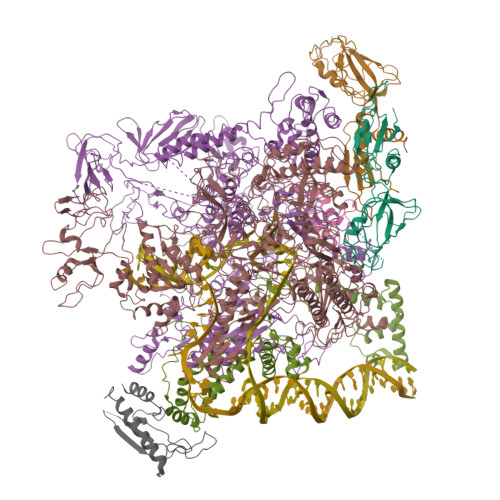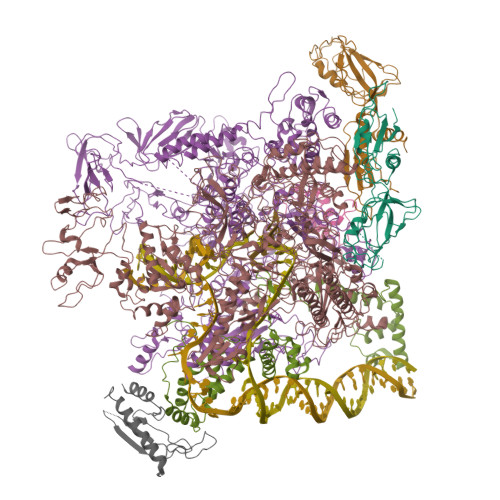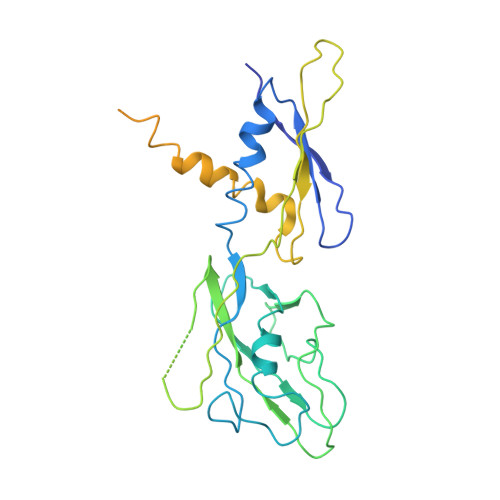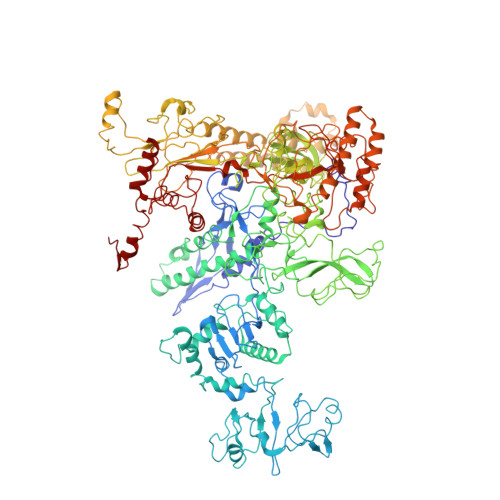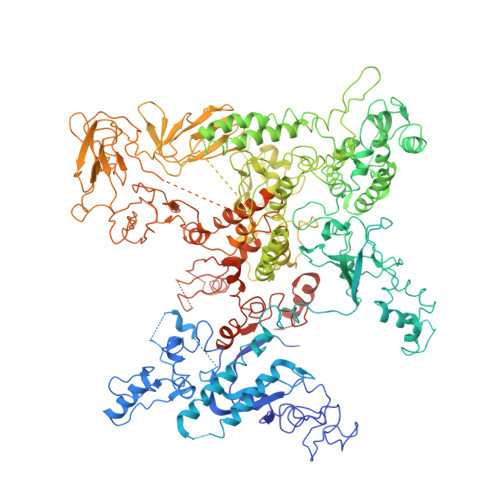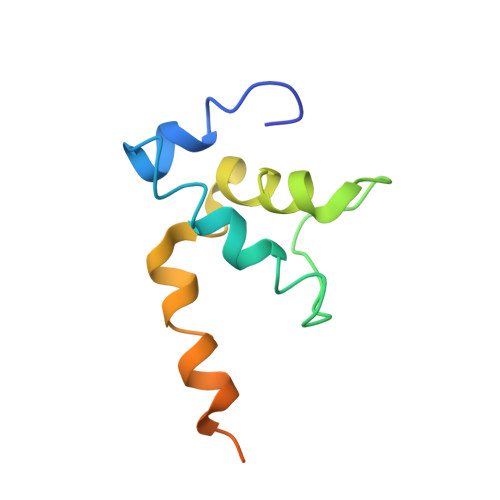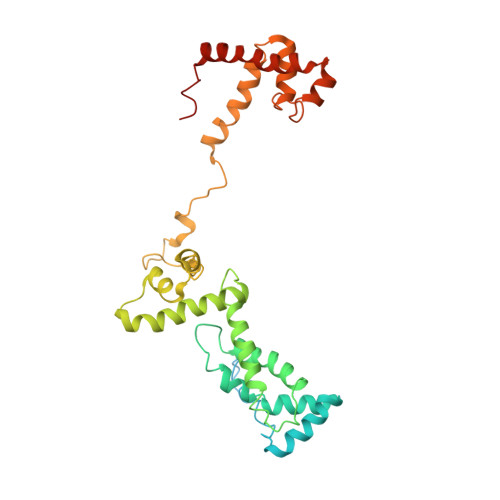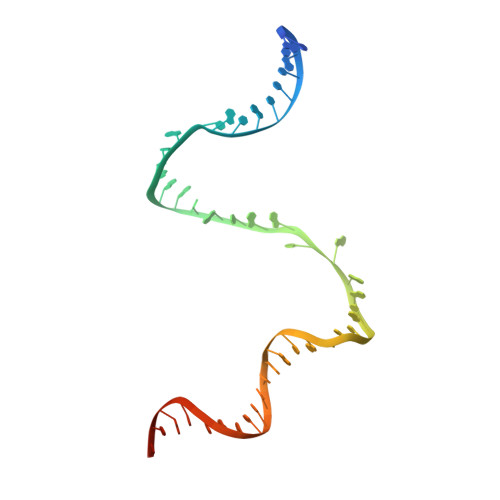Crl activates transcription by stabilizing active conformation of the master stress transcription initiation factor.
Xu, J., Cui, K., Shen, L., Shi, J., Li, L., You, L., Fang, C., Zhao, G., Feng, Y., Yang, B., Zhang, Y.(2019) Elife 8
- PubMed: 31846423
- DOI: https://doi.org/10.7554/eLife.50928
- Primary Citation of Related Structures:
6KJ6 - PubMed Abstract:
σ S is a master transcription initiation factor that protects bacterial cells from various harmful environmental stresses including antibiotic pressure. Although its mechanism remains unclear, it is known that full activation of σ S -mediated transcription requires a σ S -specific activator, Crl. In this study, we determined a 3.80 Å cryo-EM structure of an Escherichia coli transcription activation complex ( E. coli Crl-TAC) comprising E. coli σ S -RNA polymerase (σ S -RNAP) holoenzyme, Crl, and a nucleic-acid scaffold. The structure reveals that Crl interacts with domain 2 of σ S (σ S 2 ) and the RNAP core enzyme, but does not contact promoter DNA. Results from subsequent hydrogen-deuterium exchange mass spectrometry (HDX-MS) indicate that Crl stabilizes key structural motifs within σ S 2 to promote the assembly of the σ S -RNAP holoenzyme and also to facilitate formation of an RNA polymerase-promoter DNA open complex (RPo). Our study demonstrates a unique DNA contact-independent mechanism of transcription activation, thereby defining a previously unrecognized mode of transcription activation in cells.
Organizational Affiliation:
Key Laboratory of Synthetic Biology,CAS Center for Excellence in Molecular Plant Sciences, Shanghai Institute of Plant Physiology and Ecology, Chinese Academy of Sciences, Shanghai, China.








